The following story is an excerpt from Heart of the Coast: Biodiversity and Resilience on the Pacific Edge by Tyee Bridge — a new, beautifully photographed introduction to B.C.'s coastal ecology, glaciology and archaeology done in partnership with the Hakai Institute.
It’s ironic that the undersea world is so alien to most of us, since it makes up over 70 per cent of the globe.
“Planet Earth,” says marine ecologist Jenn Burt, “is actually Planet Ocean.”
Burt has years of experience exploring the ocean floor off British Columbia’s Central Coast, but scuba diving still fills her with wonder.
“Most of us only ever see the surface of the ocean,” she says. “When you descend below the surface, it’s like going into space. You feel like you’re on another planet, in a zero-gravity environment with all this life that you don’t normally get to see.”
Burt’s graduate studies undertaken with the Hakai Institute in British Columbia were focused on the ecological and social impacts of sea otter recovery — including the effects that growing sea otter populations have on coastal Indigenous communities. Her mentors and colleagues include renowned coastal ecology experts Jane Watson and Anne Salomon.

Researchers have long known about the intricate relationship between sea otters, kelp forests and sea urchins. In the wake of a devastating disease outbreak that ravaged starfish populations from Alaska to Mexico, researchers like Jenn Burt are just starting to understand the role that sunflower stars play in helping kelp beds to thrive. Image courtesy Grant Callegari/Hakai Institute.
Beginning in 2013, Burt and her colleagues studied rocky reef areas around Calvert Island on the Central Coast of B.C., initially trying to better understand the effect that sea otters were having on undersea ecological communities. Part of a recovering North Pacific population and expanding across the Central Coast over the past three decades, sea otters are a keystone species that indirectly influence the abundance of kelp forest habitat.
Kelp forests in turn provide critical habitat and nutrients to a wide variety of creatures, from the very small to the very large. Juvenile salmon, herring and rockfish all use kelp beds for habitat, as do crabs, sea stars, abalone and other snails.
Seals are frequent visitors to kelp forests, and grey whales will feed on the crab larvae they find there — as well as use the kelp to hide their calves from killer whales.
After four years of research, Burt and her colleagues came to a groundbreaking new understanding of the relationships between kelp, urchins and sea otters — thanks to unexpected discoveries about a previously overlooked bottom-dwelling predator.

What is a kelp forest?
Kelp is a type of marine algae. Also known as seaweed, there are red, green and brown varieties of marine algae, among others. They can be as small as a human blood cell or reach lengths of over 45 metres. Rather than using roots — as seagrasses do, which unlike algae are true plants — they cling to the rocky seafloor using growths called holdfasts.
Kelp produce their own food through photosynthesis, absorbing sunlight and organic carbon from the environment. Like land-based plants and trees, kelp and other algae form the base of the marine food web. They provide nourishment to the grazing herbivores that feed on them, such as sea urchins and abalone. In turn, these grazers provide food for predators, such as sea otters and certain species of sea stars like the sunflower star.
The stipes and fronds of a kelp forest create a three-dimensional lattice that benefits everything from invertebrates like snails and anemones to marine mammals like seals and whales — providing food, hiding places and shelter.
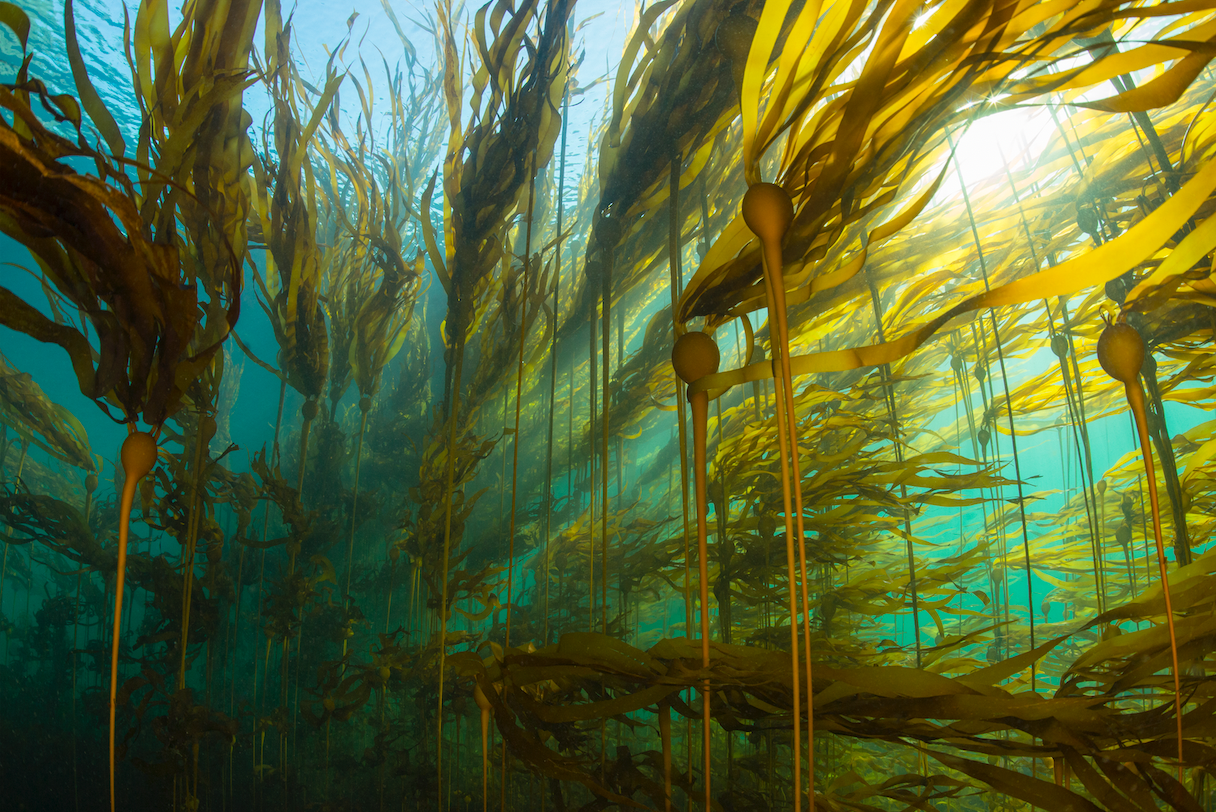
By creating nearshore habitats rich in fish and other sea life, kelp beds have been significant assets to human coastal communities for thousands of years. The abundance of food now known to be generated by kelp forests has influenced the rise of the kelp highway hypothesis: the idea that the first ice-age human populations to expand southward from Beringia did so by exploiting the rich marine resources of ice-free coastal regions, rather than migrating via an inland corridor between ice sheets.
Kelp forests are influenced by a huge range of physical and biological factors. They are sensitive to temperature, ripped up by storms and affected by currents and waves. Researchers have also discovered that kelp forests in the northeast Pacific can be dramatically impacted by the presence of two predators.
One of them is cute and fuzzy — the other one, less so.
The sea otter connection
In 1970, an ecologist named James A. Estes traveled to Amchitka Island in Alaska’s Aleutian archipelago to study sea otters. The Atomic Energy Commission had sponsored his research there ahead of a contentious nuclear test on the island. Despite the Cold War considerations that placed him there, his research ended up transforming our modern understanding of coastal ecology.
Observing sea otters and kelp beds on Amchitka — both onshore and during scuba dives — led Estes to question the links between them. The crucial connection, he discovered, was sea urchins. Sea urchins are voracious grazers of kelp.
Sea otters, in turn, are equally voracious predators of sea urchins. But Estes didn’t understand the real meaning of what he’d seen until a meeting with veteran ecologist Bob Paine.
“Bob listened to my account of what I had seen while diving," Estes recalled in his 2016 memoir Serendipity, "and what I thought it might mean and then abruptly suggested a simple but radically different change in perspective. Rather than wondering how the kelp forests affected otters… why not explore how the otters affected the kelp forests?”
Estes’s observations revealed an “extraordinarily high” sea otter population around Amchitka, inhabiting a lush undersea world of kelp forests. To understand the relationship between the two, Estes needed to find an area that was devoid of otters and see what the kelp forests looked like. He found that about 350 kilometres to the west of Amchitka, off a remote island called Shemya.
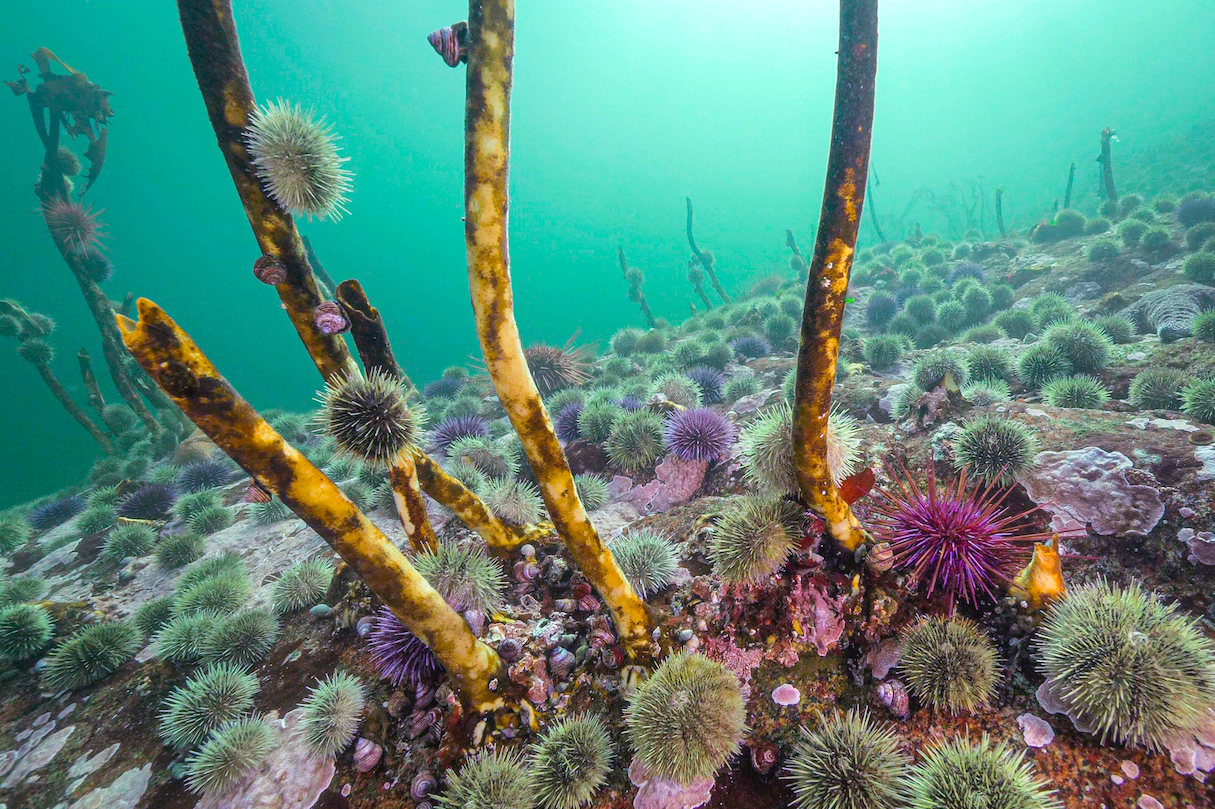
As he tells in Serendipity, what he saw when he put on his scuba gear and entered the waters off Shemya shocked him:
"When I looked down at the seafloor, I was stunned by the vast numbers of urchins and the absence of kelp… Every place I looked was the same—large and abundant sea urchins over a seafloor of crustose coralline algae with little or no kelp… In the absence of sea otter predation, sea urchins had increased in size and number, and the larger and more abundant urchins had eaten the kelp. This was my 'aha moment,' a profound realization that would set a path for the remainder of my life."
Estes had seen what is now known as an urchin barren, the result of a trophic cascade. He would go on to realize that sea otters are a keystone predator that increases the abundance of a diverse array of sea life. In coastal areas where sea otters regularly consume sea urchins, kelp forests have a greater chance to take hold and endure, and act as an undersea forest habitat for other marine animals.
But when there are not enough predators like sea otters to feed on sea urchins, the urchins graze over and effectively wipe out kelp forests.
Thanks to Estes, and the work of subsequent researchers like David Duggins and Jane Watson, the beneficial effects of sea otters in propagating kelp habitats have been well established among ecologists, and increasingly well known to the general public.
But a new twist on this relationship, usually understood as a three-way interaction between urchins, kelp and sea otters, has recently come out of the work done on the Central Coast by Jenn Burt and her Hakai Institute colleagues.
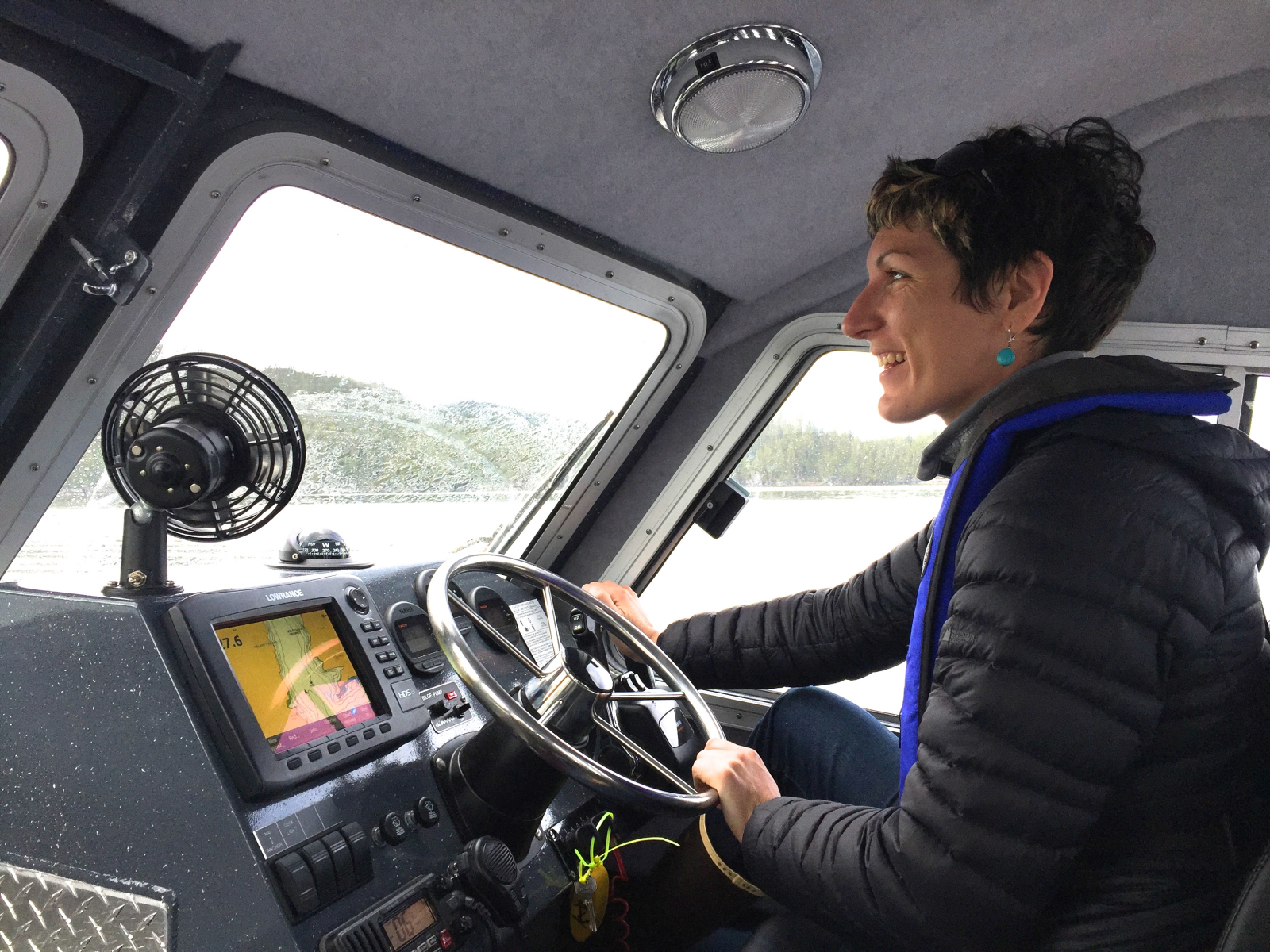
A natural experiment
In the waters around Calvert Island, where surface temperatures dip as low as 8 C, subaquatic researchers need an airtight dry suit along with their usual scuba gear. Burt and her colleagues also carry a panoply of marine science tools: a foldable, two-dimensional box for sampling called a quadrat; sealable bags for collecting everything from kelp to invertebrates; a writing slate with data sheets, pencil and built-in ruler; and meter tapes for measuring survey areas, known as transects.
“By the time you clip all the gear onto yourself so that you have everything and it doesn’t float away,” Burt says with a laugh, “it can look like a real gong show.”
For Hakai Institute scientists, undersea surveys bring other challenges. Rough weather on the outer coast can keep research vessels tied up at the dock for days. When boats are able to go out to gather data — in Burt’s case, counting sunflower stars, or performing an undersea experiment to track urchin feeding rates — divers have only 45 to 60 minutes to complete their task before their oxygen runs out.
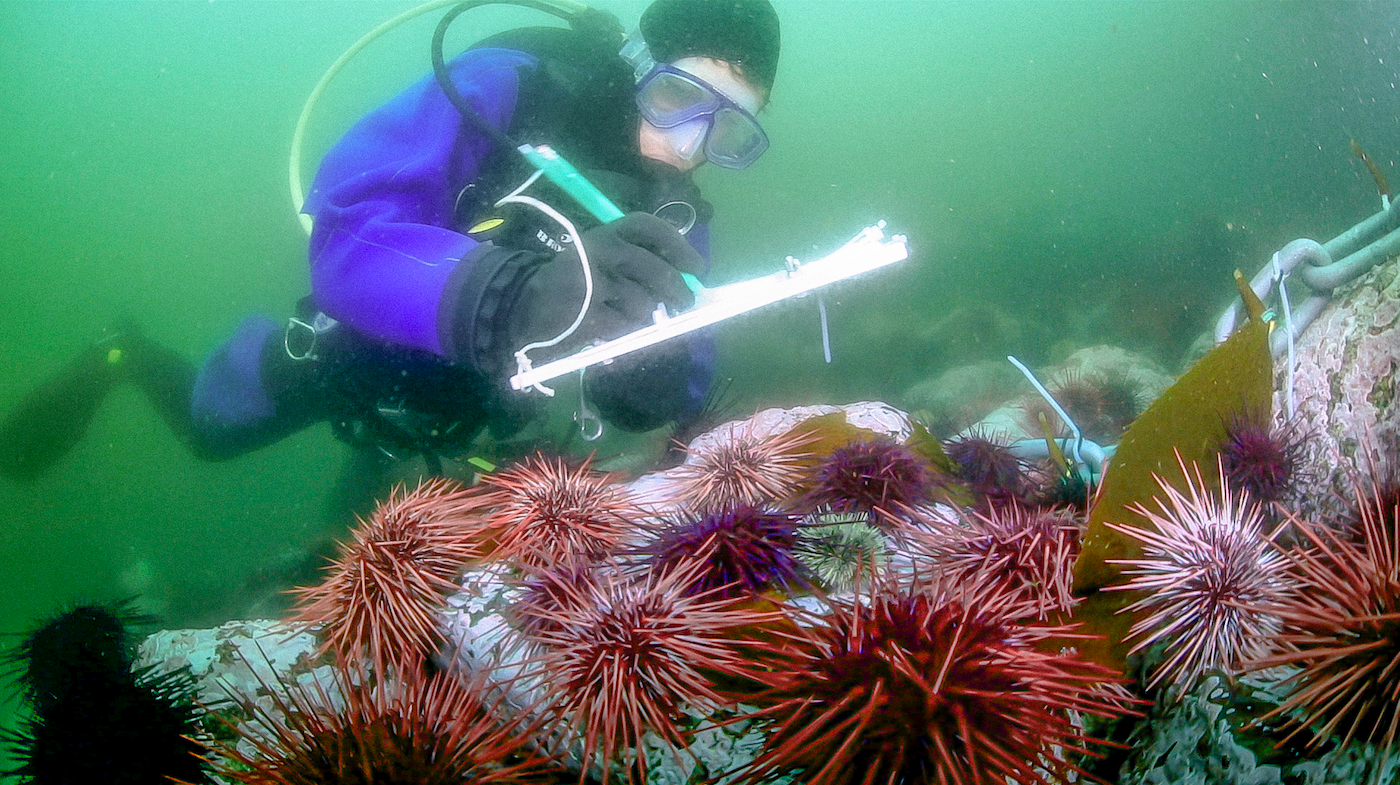
The need to stick with your “dive buddy” and communicate with hand signals or by scrawling on a slate can slow things down, as can murky water. Perhaps the biggest challenge is that the waters of the Central Coast are rarely still. Unlike the woods on land, a kelp forest moves with the push and pull of the ocean — and so do the researchers.
Enduring the challenges of underwater experimentation and monitoring, however, can lead to groundbreaking insights. Burt and her fellow researchers began collecting data in 2013, not knowing that two years later, the epizootic of sea star wasting disease (SSWD) would strike the waters around Calvert Island. Their timing was serendipitous.
Burt’s original focus was to track ecological communities before, during and after the arrival of sea otters, which — because of their post-fur trade population recovery — are still recolonizing reef habitats across the North Pacific Rim. The waters around the Hakai Institute on Calvert Island are at the leading edge of this expansion, and like the Aleutian Islands, are well suited to this sort of study.
There are areas with and without sea otters where researchers can compare the differences in kelp abundance, urchin populations and other aspects of undersea habitat. When SSWD struck the region during the winter of 2015, it suddenly brought a new dimension to the research: a rare opportunity to also look at how predatory sea stars influence coastal rocky reef ecosystems.
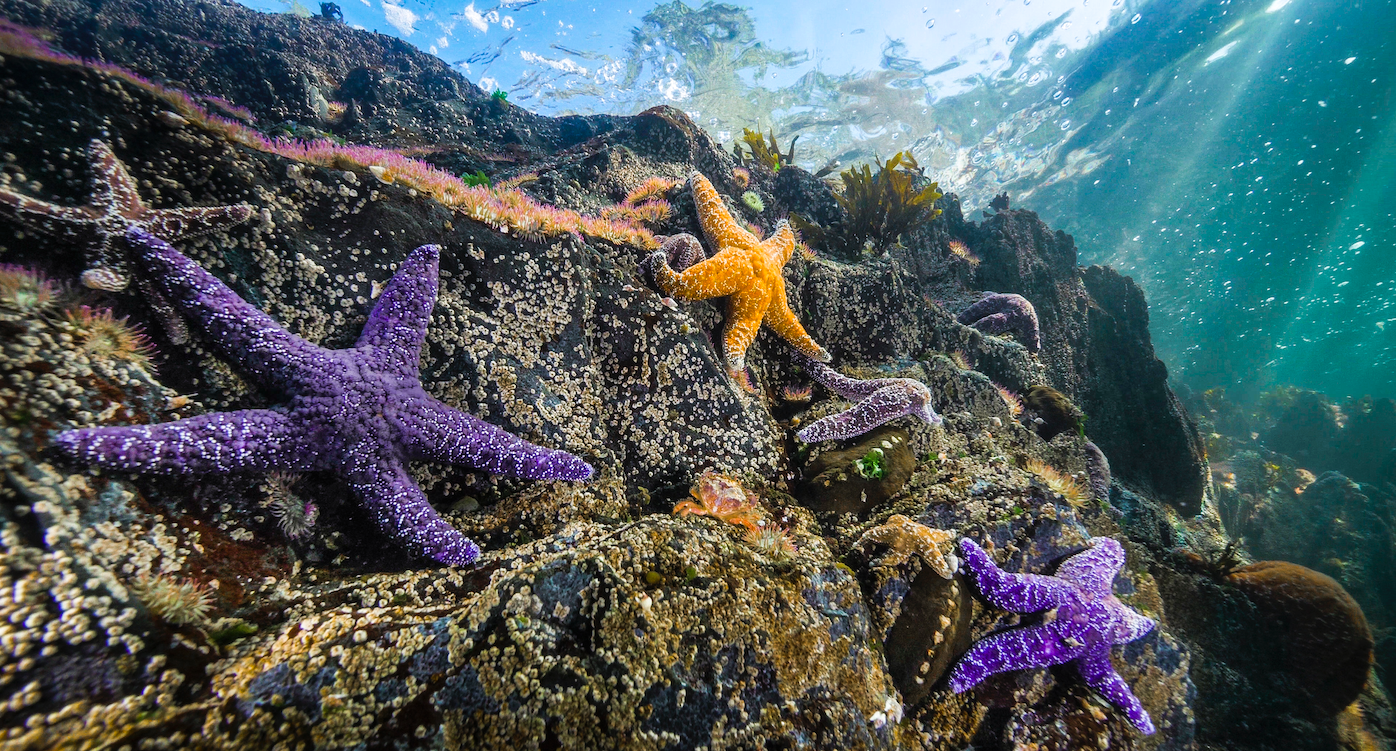
“This is the important element of surprise in science,” says Burt. “We just don’t always know what we’re going to find.”
The disease outbreak created what is known to researchers as a natural experiment — a unique condition that appears without artificial or planned intervention. By wiping out huge numbers of sea stars, including those in nearshore kelp-producing zones, SSWD had created a new set of research conditions.
“There are so many interactions in the ocean that we don’t totally understand and probably never will, because we can’t systematically remove and then replace all the animals in the ocean,” says Burt.
“But when we have that opportunity to observe a sudden absence of a particular organism, and see what the impacts of that are, we have a lot more understanding. That’s the bigger narrative around this research that I think is really neat.”
Using a dataset collected over four years, Burt and her colleagues learned that sea otters are not the only predators that have a significant effect on urchins, and thus not the only creature that can help ensure the health and abundance of kelp forests: the less cute but nonetheless impressive sunflower star also plays a major role.
On the Central Coast reefs she studied, Burt links the loss of sunflower stars to a startling 300 per cent spike in the population of small and medium-size urchins, and to a resulting 30 per cent decline in kelp density.
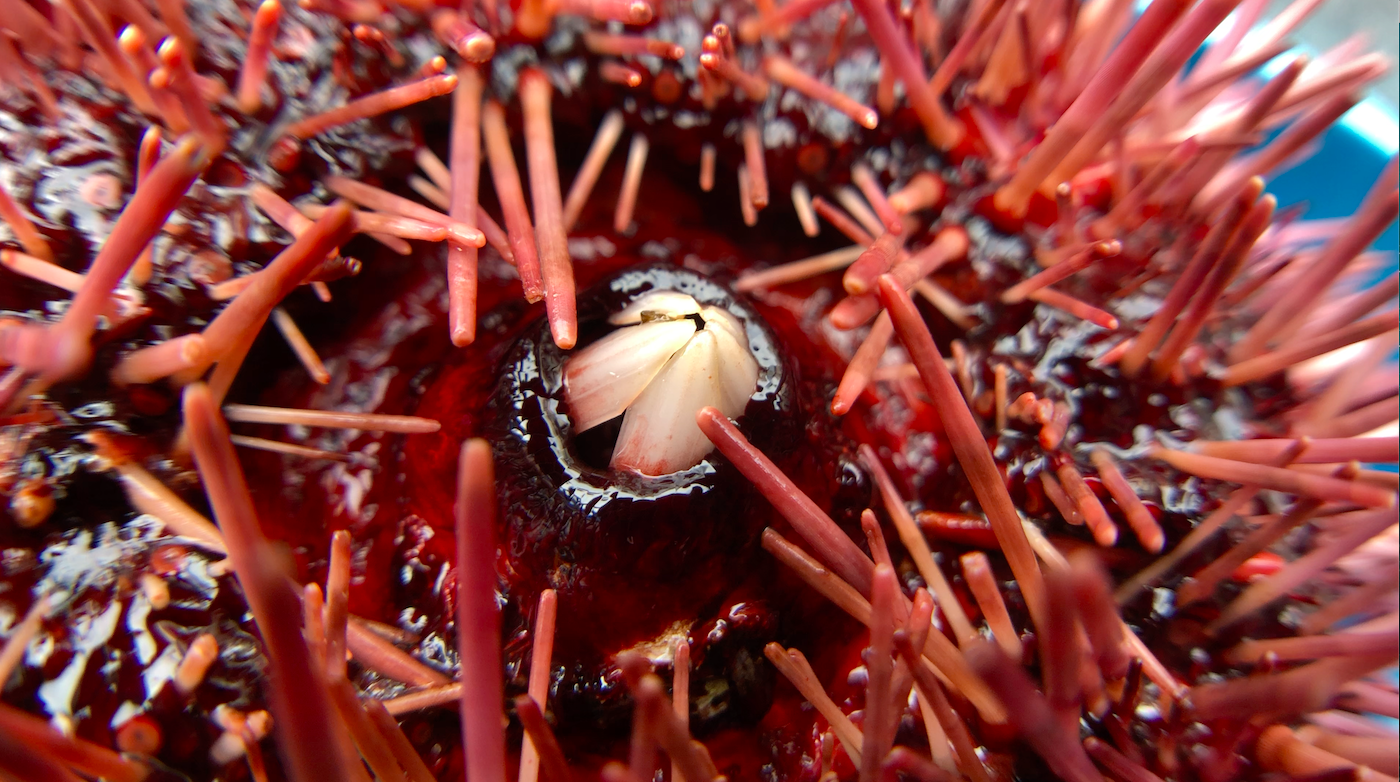
What Burt noticed on underwater surveys after the disease event was that there were more small and medium-size urchins everywhere Burt and her colleagues looked. That gave the team some hunches about what they wanted to look at more closely in the data.
When they did, says Burt, the insights came not only from her, but from “looking at the system with some clever modellers, from having coffees with Jim Estes and from talking with people who had seen similar things in other areas with green urchins.”
Sea otters do an excellent job of eating large sea urchins over eight centimetres in diameter, but they tend to leave behind smaller urchins. These small urchins also readily devour kelp, and if their numbers swell, they begin to thin out kelp forests. However, these smaller urchins are a favourite food of sunflower stars.
“Sunflower stars mop up the little sea urchins,” says Anne Salomon. “It was very interesting to learn how they give a helping hand to the apex predator in these areas, sea otters.”
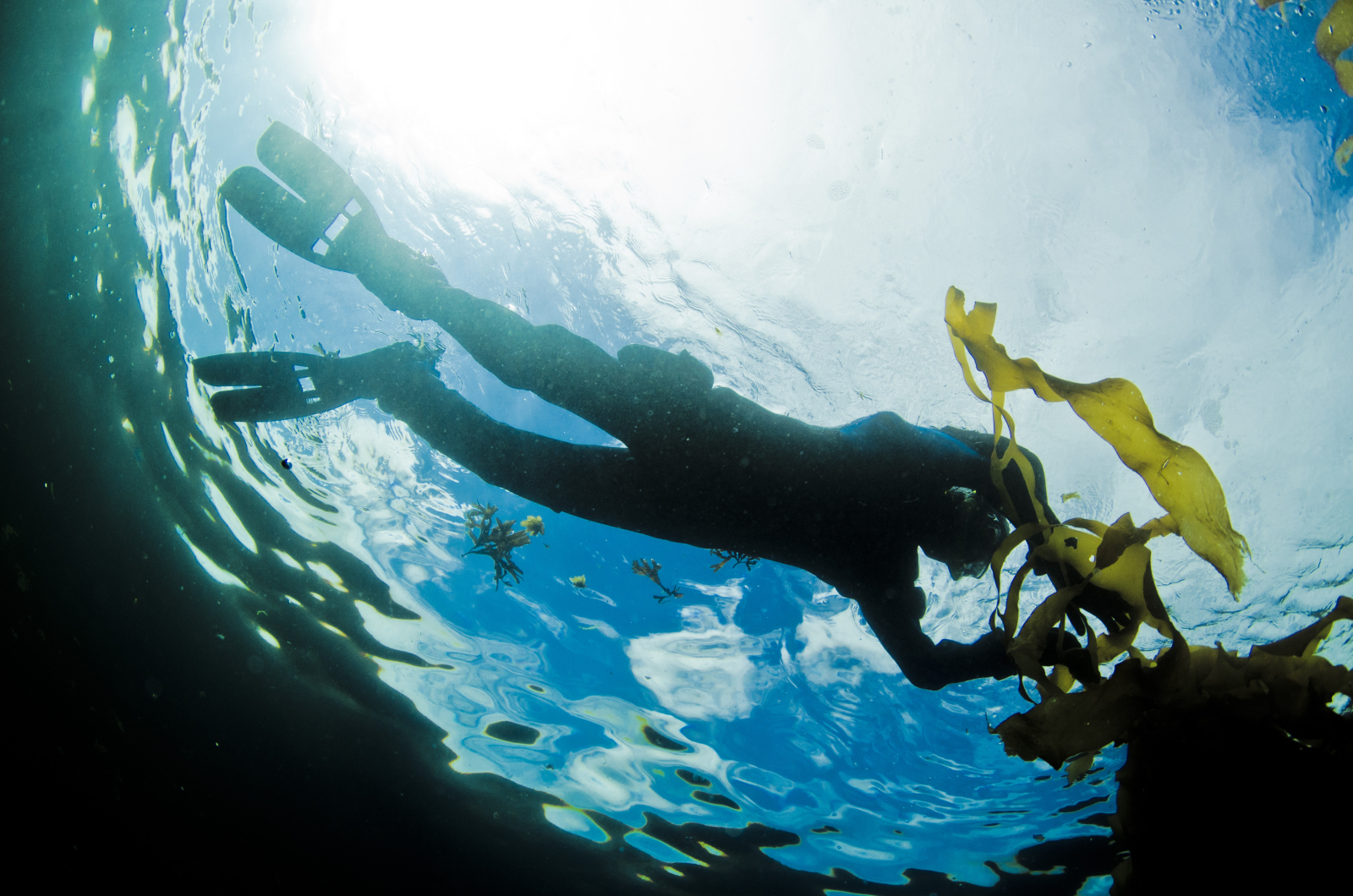
Salomon notes that although many ecologists had suspected that sunflower stars played a role in the resilience of kelp forests, that role had not yet been measured or acknowledged.
“Sea star wasting disease came and did the experiment for us, and research on the Central Coast with Jenn Burt provided evidence of the important role that sunflower stars have,” says Salomon.
“It really is like that Joni Mitchell line, ‘You don’t know what you’ve got till it’s gone,’” says Burt. “When you remove an organism from the system, it’s then you realize that its impact was actually quite substantial.”
Researchers from British Columbia to California have seen large swaths of kelp forest disappear off the coastline in recent years, a troubling development that appears connected both to rising ocean temperatures and SSWD. Confirming the previously uncertain role of sunflower stars in kelp-bed ecology will help researchers as they monitor the resilience of kelp beds across the North Pacific Rim and manage their recovery.



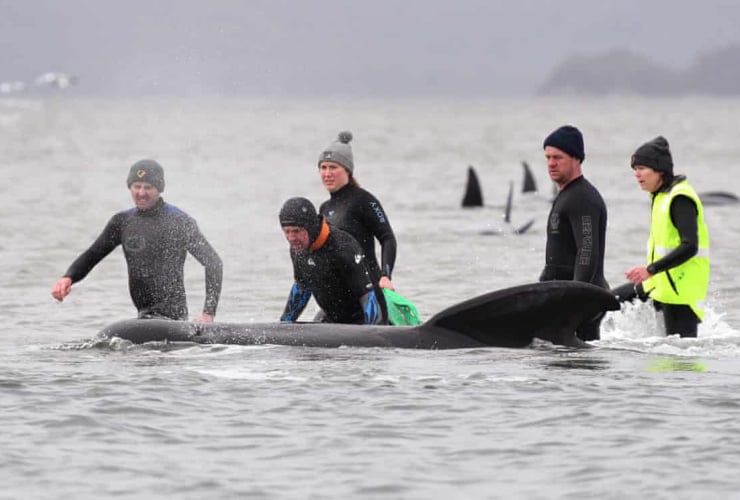
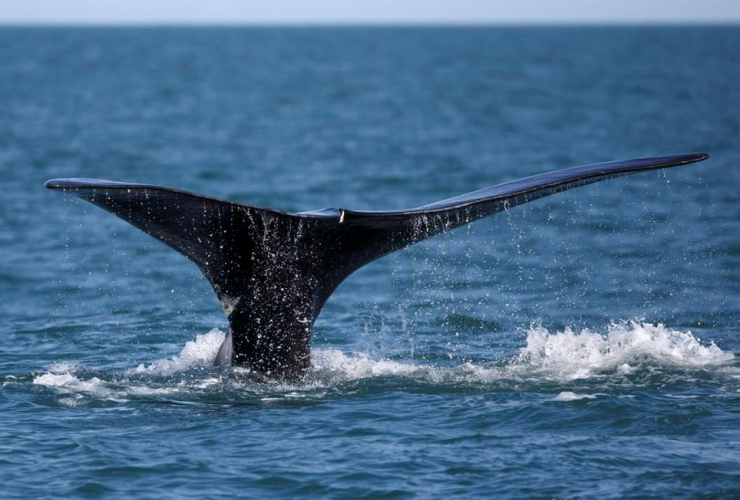

Comments